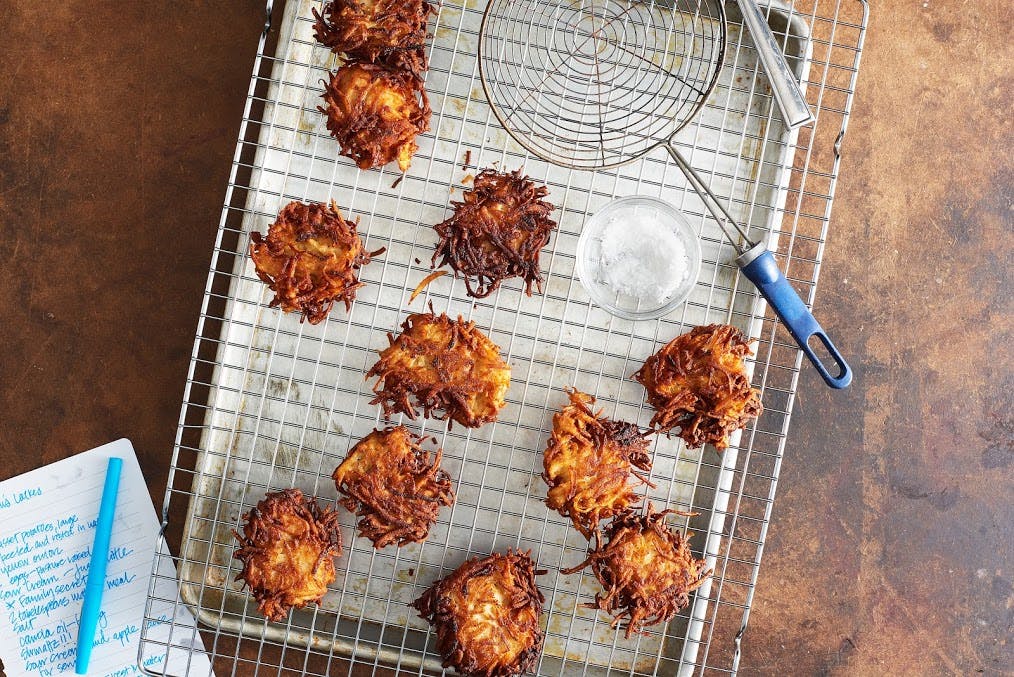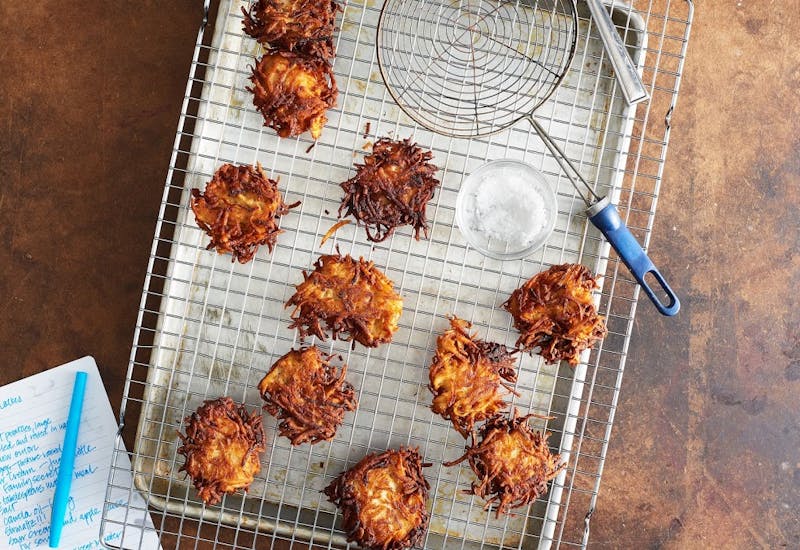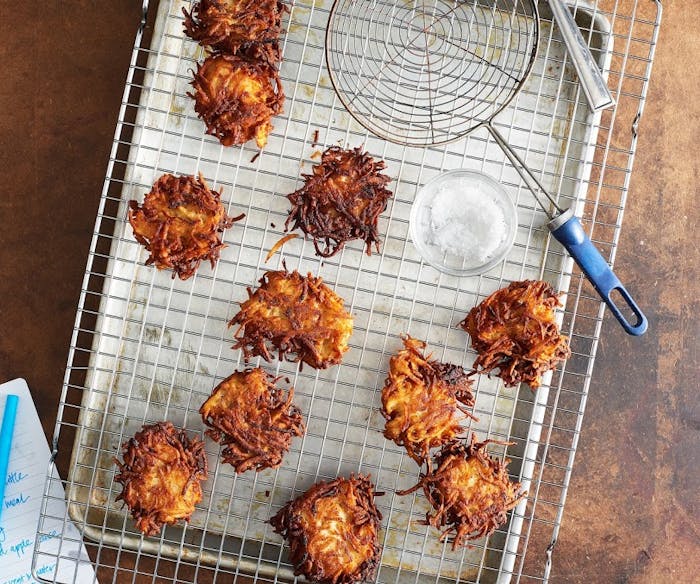Listen to the Story
Adam Zolot grew up by the beach in a small, deeply Jewish town called Margate. If you’ve played Monopoly, you might recognize the street names there like Atlantic Avenue and a neighborhood called Marven Gardens. It’s just downbeach, as some locals say, from Atlantic City. But to Adam, who now lives across the country in San Francisco, Margate, at this time of year, is “Hanukkah Heights,” he says. “It was so Jewish, the norm was Hanukkah. [As kids,] we didn’t have Christmas envy.” Instead, the non-Jewish kids in school, as he recalls, had Hanukkah envy. “It’s an interesting thing to go out into the world from that,” says Adam, who is the director of operations for Feastly.
Farther up the island, in Atlantic City, his grandfather Morris Zolot started a small family restaurant empire. Among the group was Junior’s, his mother’s restaurant, which Adam describes as a “Jersey sort of slant to a coffee shop” near the Atlantic City court house. The restaurant wasn’t kosher or specifically Jewish, but many of the island’s Jewish lawyers ate there regularly. “That meant she had fried matzo, latkes, matzo ball soup, brisket, corned beef, and pastrami on the menu, even though it wasn’t a deli,” he adds.
Adam grew up in the kitchen. “I was always under foot as food was being prepared,” he recalls, whether it was in the restaurants or at home with "Big Bubby," his great-grandmother, who emigrated from Kyiv. “There was always this spirit of cooking — I was infused with it, year after year,” he adds.
While the entire family cooked, not everyone agreed on recipes. When it came to latkes, his mother and aunts all made then, and everyone had their version. There wasn’t exactly a rivalry, Adam says, “I think it was more subversive.” An aunt or his mother would say “Oh, I think we’re going to host this year,” because they wanted to eat their own style of latkes.
The exposure to different latkes helped form Adam’s own very strong opinions on the Hanukkah classic. “I could probably recreate my grandfather’s latkes or aunt Esther’s, but these ones are uniquely mine,” he says. They are intentionally petite in stature, small enough to be picked up and eaten with one’s fingers at his annual Vodka::Latke party, where he estimates he serves 500 latkes of different varieties, with these as the anchor.
“What it comes down to, if you dissect the essential components” of a latke, he says — launching into an almost scientific discussion — is that it’s really all about the crispy, lattice exterior. A smaller latke, “gives you the greatest surface to crispy ratio.” Another crucial element, which he borrows from his grandfather Morris, is liberal use of schmaltz, mixed into the frying oil. “I’ve gone down many paths to come to what is the ideal latke in my perspective...The devil is in the details. If you want to elevate the form, you need to catch the subtleties” he adds.
While Adam’s opinions about his own latkes are unwavering, he says he can “tolerate” latkes made by a novice. Adding: “Latkes are like sex, even when they’re bad, they’re good.”
Find more holiday recipes in our Hanukkah recipe collection.


